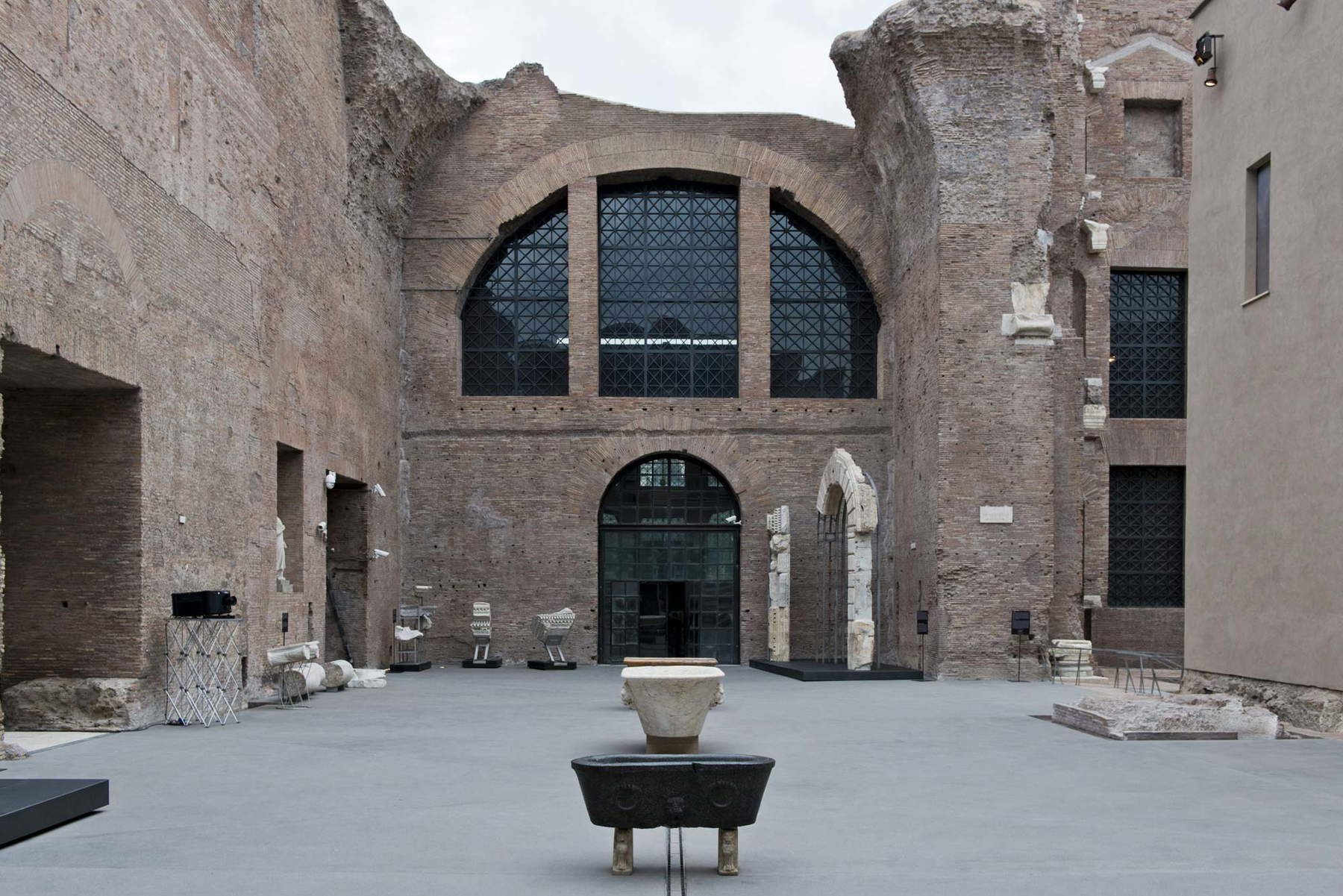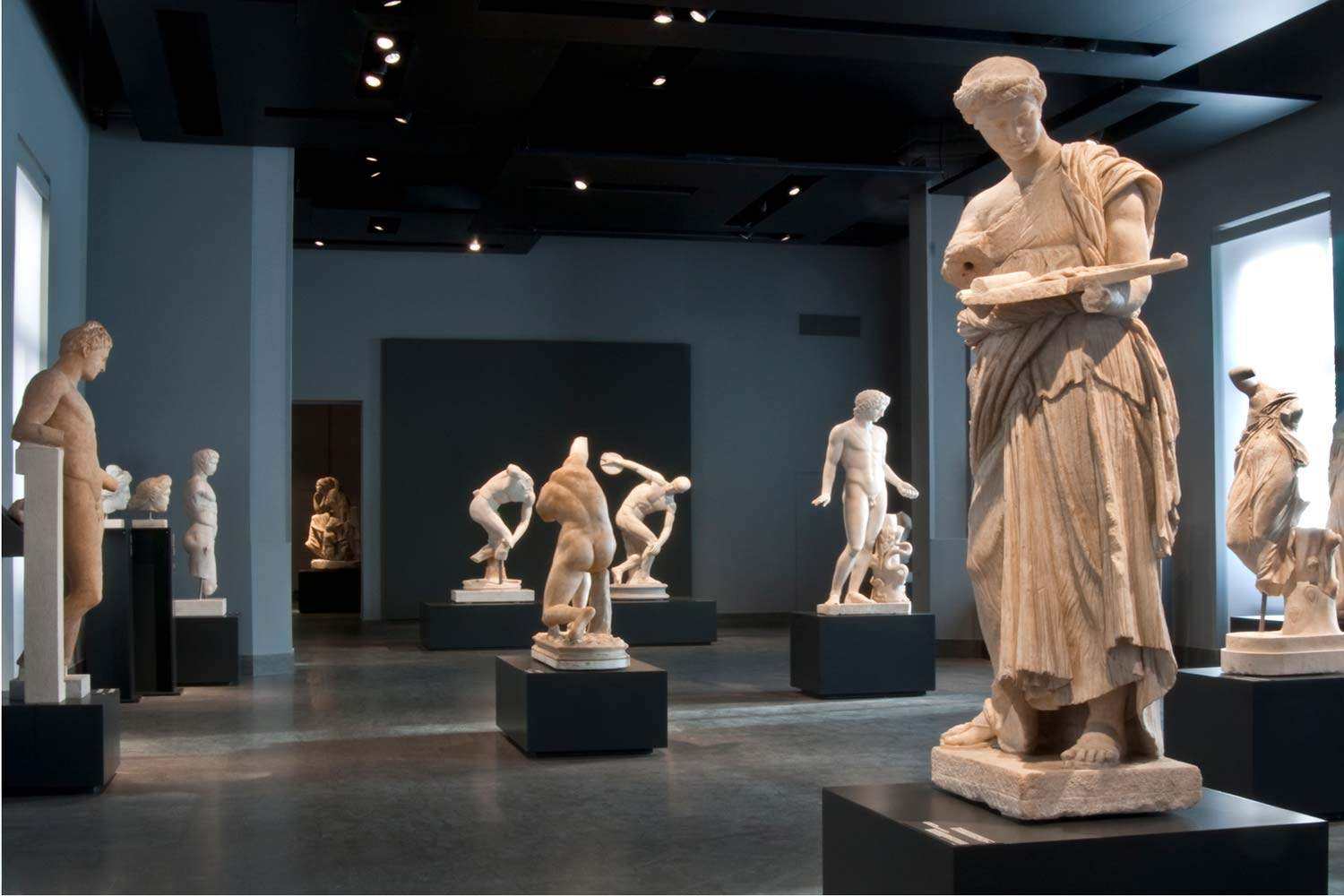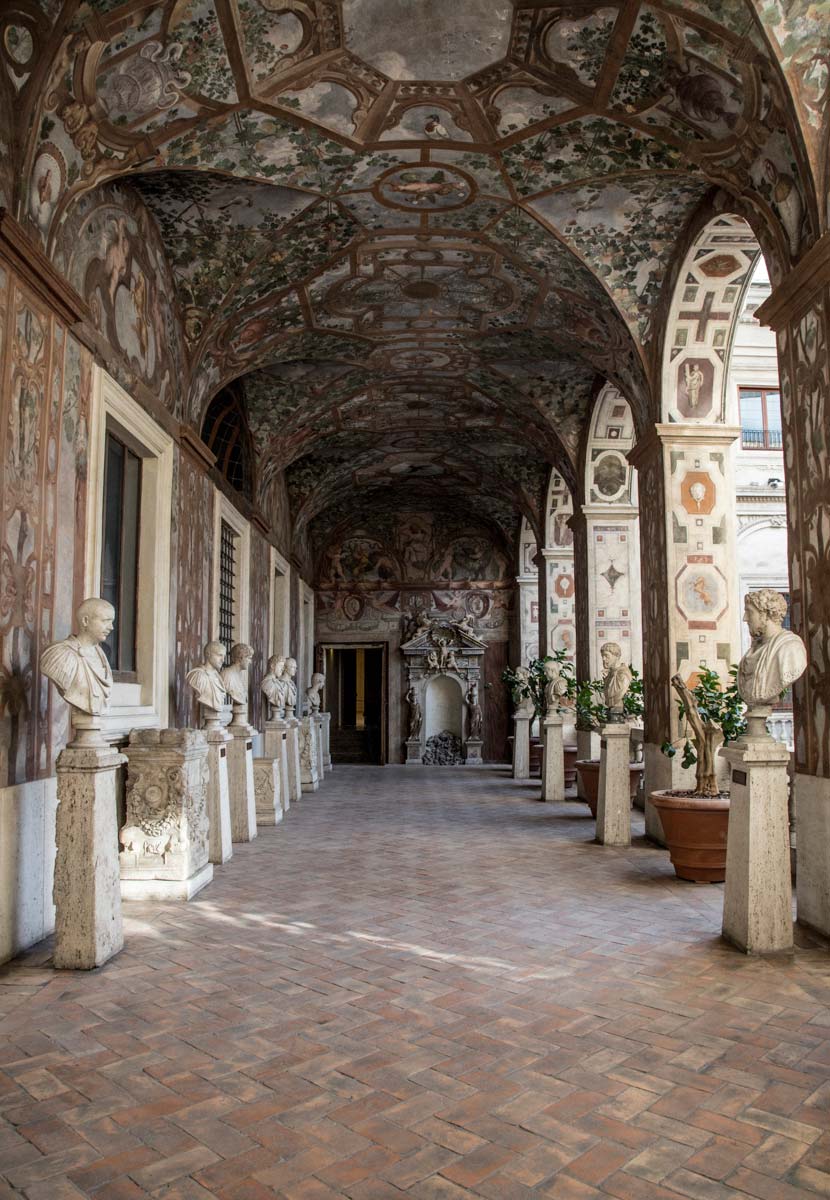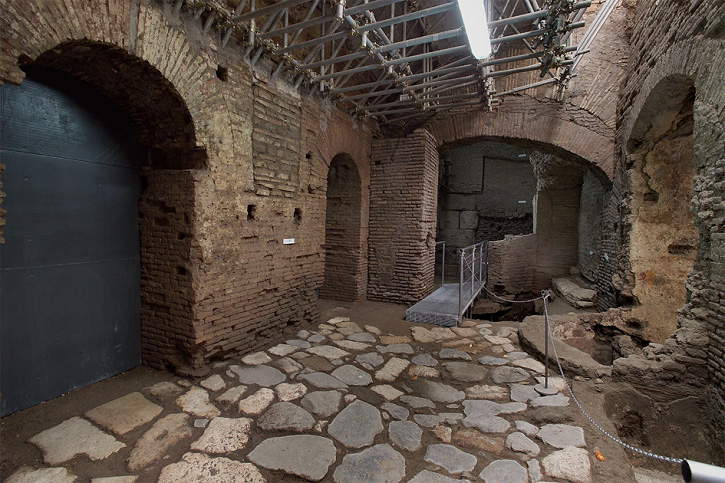The National Roman Museum is about to become one of the most important construction sites in Rome: in fact, important restoration works at all four sites of the museum dedicated to the history and art of ancient Rome (Baths of Diocletian, Palazzo Massimo alle Terme, Palazzo Altemps, Crypta Balbi) will start soon. In fact, the Urbs project, from the city to the Roman countryside, financed by the National Program for Complementary Investments to the NRM, will allow the realization in the coming years of an articulated program of works in the MNR’s four venues to complete the restoration of the historic buildings under its jurisdiction, respond to emergencies related to aging facilities and open new monumental exhibition spaces. The result will be the expansion and reorganization of the museum itinerary in all four locations, with the return to the public of many hitherto invisible works. The works will make it possible to tell the story of Rome, from its origins to contemporary times, including through the most recent results of archaeology, favoring, the NRM points out, an innovative vision that makes the route accessible to all types of audiences.
The National Roman Museum, together with the Appia Antica Archaeological Park, is among the 14 “major cultural attractors” chosen by the Ministry of Culture having as their object strategic interventions for the revitalization of culture and tourism in Italy. The museum has obtained an allocation of 71 million euros, in addition to other previous funding, for a total of about 100 million in all. The program involves the four venues of the Baths of Diocletian, Palazzo Massimo, Palazzo Altemps and the Crypta Balbi, all of which are at the center of a restoration and refurbishment project that, in accordance with the PNRR timetable, will last four years. During the completion of the work, which will entail partial closures at the four museum venues, temporary thematic presentations will alternate to showcase little-known or never-seen works, pieces hitherto relegated to storage, and recently restored artifacts. Here is the plan of interventions in detail.
Refurbishment of plant engineering, static checks and earthquake-proof inspections are needed to restore and open to the public the seven Great Halls around the basilica of St. Mary of the Angels. The majestic rooms, which hosted in 1911 the great archaeological exhibition for the 50th anniversary of the Unification of Italy, will expand the Museum’s exhibition area, allowing the permanent and cyclical presentation of very important works and contexts, but for decades hidden from the public. In addition, thanks to an agreement made with the Special Superintendence of Rome and the Appia Antica Archaeological Park, the upper floors of the four wings of the Michelangelo Cloister, in all almost 400 m long portico (about 100 m on each side), and those of the small cloister of the Carthusian Monastery, 160 m long (40 m on each side), will be returned to the museum itinerary. Important spaces, those of the Carthusian Monastery of St. Mary of the Angels, which, for the new Museum display, will accommodate the history of the city in the context of Latium Vetus (ancient Latium), from its origins to the time of Diocletian. On the second floor of the Michelangelo Cloister, contexts will be displayed that tell the city’s earliest history, from its origins to the end of the republic, that is, from the 10th to the 1st century BC. From the protohistoric necropolis, already presented, of Roma and Osteria dell’Osa in Gabi, it will continue with those, orientalizing, of Castel di Decima, Laurentina and Ficana (7th century B.C.). Thanks to a grant from the Swiss Confederation, the restoration of a large princely tomb from the Laurentina necropolis, No. 93, is underway, while with a grant from the Droghetti Foundation, work is underway to recover the rich female tomb 359 from Castel di Decima. The third wing will present the centers of Archaic Latium such as Crustumerium, Fidene, Gabi and Lanuvio, with the famous Tomb of the Warrior, while the fourth wing will tell the story of the transformation of Rome and the centers of ancient Latium from the mid-Republican period (4th century B.C.) to the 2nd-1st century B.C., with shrines and votive offerings from the Tiber and centers such as Ariccia. In the galleries on the second floor of the Small Cloister of the Carthusian Monastery, the imperial city will be presented: starting with recent findings by the Special Superintendence of Rome, yes will tell the story of the “city of the living” from the time of Augustus to that of Diocletian. A separate section is reserved for the “city of the dead,” with funerary documentation. Funerary inscriptions, sarcophagi, reliefs, urns, portraits and grave goods dating from the 1st century B.C. to the 3rd century A.D. will be displayed in a single narrative. The tour on the necropolis will continue in the gardens, with many artifacts, and in the forica, that is, the ancient thermal latrine. There will also be a section devoted to the history of the Baths of Diocletian complex and its transformation into a Carthusian monastery in the 16th century; finally, a last section, carved out inside the Great Halls, will offer a brief and spectacular introduction to the history of Rome for those who, arriving at Termini station, will have only limited time to devote to the visit.

At the Palazzo Massimo, the main project is to cover the inner courtyard so as to expand the visit route by displaying the many works now kept in storage and providing the possibility of creating an immersive environment where the Roman Empire can be evoked through the reconstruction of an iconic place like a sanctuary. The theme of the itinerary will be that of Rome as the center of the Empire, from the time of Augustus to that of Maxentius (from the 1st to the beginning of the 4th century): the life and succession of the emperors; the complexity of religion and the diversity of cults; the conquests and their effects on the Roman economy and representation of the world; private luxury, otium, culture and life in aristocratic residences. The ground floor will display the most significant documents for the history of the Empire, from the Fasti and the secular Ludi to the famous insignia of the power of Maxentius. The second floor will be devoted to the Empire, its conquests, and the many religions that were practiced and represented there, from Egypt to the East. In short, the greatness of Rome. Exotic materials from Asia and Africa will be placed here, with a multisensory display. The second floor remains dedicated tootium, with the great suburban villas such as that of Livia and the Farnesina, animated by splendid paintings, but also by a rich and refined intellectual life, with Greek and Latin literature. The Medagliere, the largest and oldest preserved, closed for the Covid emergency, will also be reopened, and the number of coins on display will be expanded, which will be included in all the thematic itineraries of the National Roman Museum to create a sort of medagliere spread throughout the four venues.

Palazzo Altemps will remain the place of collecting, centered on the Boncompagni Ludovisi collection, which will serve as the guiding thread of the visit. But the new, more didactic itinerary will provide an understanding of the many ways in which, from antiquity to the Renaissance and modern eras, Greek sculpture was reinterpreted and transformed, depending on the various social and intellectual contexts in which it was used. The new tour will begin, on the ground floor, with a concise presentation of the long history of the Palace and the families who created and transformed it. The next section will show in a concrete way what a sculpture collection was in Rome in the seventeenth century: through the Boncompagni Ludovisi collection it will tell how works were chosen, how they were restored, how original creations were made from fragments, pastiches, or created modern versions of ancient works. The different uses of Greek sculpture in the imperial age will then be illustrated. The new spaces around the Hall of the Jewel will host Greek originals, such as the Ludovisi Throne, Roman copies of works by Myron, Polyclitus, and Phidias, also transferred from the Palazzo Massimo and the Baths of Diocletian, and Roman creations elaborated from Greek models, such as the Ludovisi Hermas. The second floor will host Roman reworkings of the works of the great masters such as Praxiteles and Lysippus, to show how blurred the boundary between Greek originals and Roman copies is, and, finally, the relations between Greek and Roman sculpture in the Hellenistic period, with an exceptional and little-known context such as the group of garden sculptures from Fianello Sabino from the late 2nd to early 1st centuries B.C., which constitutes the oldest collection of Greek sculpture preserved in the Rome area. Palazzo Altemps, one of the most beautiful Renaissance aristocratic buildings in Rome, located just a stone’s throw from Piazza Navona on the most important tourist route in the historic center, will also be identified as an ideal place to present, in addition to the Boncompagni Ludovisi collection, the greatest masterpieces of ancient sculpture, such as the Lancellotti discus, the seated boxer and the Hellenistic bronze prince, which will therefore leave Palazzo Massimo and move here. Restoration work on the venue, which has already begun in part, involves the recovery of the second courtyard, the Hall of the Jewel, and its portico built in the early 16th century, so as to return to the public a vast 400-square-meter, extraordinary space covered by a skylight in the early 20th century. The intervention also involves the restoration of the altana, the oldest in Rome; the restoration of the theater, the only one preserved in a private Roman palace; and the use of the church, where Gabriele D’Annunzio married Maria Hardouin di Gallese, which will host concerts and cultural events.

Currently, the Crypta Balbi is known as the museum where the transformation of the city between Late Antiquity and the Middle Ages is presented. In reality, this museum covers only a very small part of the Crypta Balbi site. At present, about 90 percent of the area of the block under the jurisdiction of the National Roman Museum is not accessible, due to the dramatic state of deterioration of the buildings and the impossibility, for security reasons, of opening the archaeological route to the public. The project involves the restoration of the entire area including the 16th-century convent commissioned by Ignatius of Loyola and the surrounding buildings, which have a stratigraphy ranging from the 1300s to the entire 1900s. The Crypta Balbi also preserves valuable evidence of recent history, whose memory we have a duty to preserve, from the most tragic events of World War II, such as the October 16, 1943 rounding up in the Ghetto, to the Years of Lead, with the discovery of Aldo Moro’s body on May 9, 1978. The 71-million-euro intervention will preserve and enhance these memories through philological restorations that will not privilege one era or another, but will focus on each phase of Rome’s history, restoring it to the general public and Romans. Once the clearing and securing of the buildings is completed, the work phase will start soon, necessitating a temporary closure of the museum building from January through the year 2023. The first goal is to expand the exhibition route, presenting the history of Rome from Constantine to contemporary times. It will be organized into three major sections: in the first, on Via delle Botteghe Oscure, Rome and its transformations from the time of Constantine to the Middle Ages will be presented. The exhibition space will be greatly expanded, with the restoration of the inner courtyard. The ground floor will be devoted to the transformations of Late Antiquity, from the 4th to the 5th century. The second floor will present the beginning of the Middle Ages, with the Lombards, from the 6th to the 8th century, while on the second floor the chronological path will extend from the Carolingian age to the 11th century. It will pass into the second section of the museum through the underground tunnels of the monastic complex. The route will cover the ancient quarter of the Crypta Balbi, with a visit to the archaeological remains around the exedra, the mithraeum and the living quarter. The third section, on Via dei Delfini toward the Ghetto, will focus on the modern and contemporary history of Rome, from Ignatius of Loyola to Aldo Moro. In the overall project, which will be completed thanks to the PNC’s Urbs program, the museum is just one part of the cultural district that the Crypta Balbi block will become in the coming years. The central area and the adjoining courtyards will be freely accessible and usable by citizens and visitors through an urban walkway that will provide four entrances, one on each side of the block, starting from Via Caetani and then Via delle Botteghe Oscure, Via dei Polacchi and Via dei Delfini. There will be refreshment places and craft workshops, as well as meeting and conviviality areas. The Crypta Balbi block will also be equipped with a study center, an archive and digital productions center, guest quarters for students, scholars and artists, and by a center for events and temporary exhibitions. It is therefore a matter of returning to the community an extraordinary piece of the city, which will become to all intents and purposes a great cultural district in the heart of Rome, in an exceptionally important historical and archaeological context.

 |
| National Roman Museum, major work begins at all four locations. Here's what it will look like |
Warning: the translation into English of the original Italian article was created using automatic tools. We undertake to review all articles, but we do not guarantee the total absence of inaccuracies in the translation due to the program. You can find the original by clicking on the ITA button. If you find any mistake,please contact us.